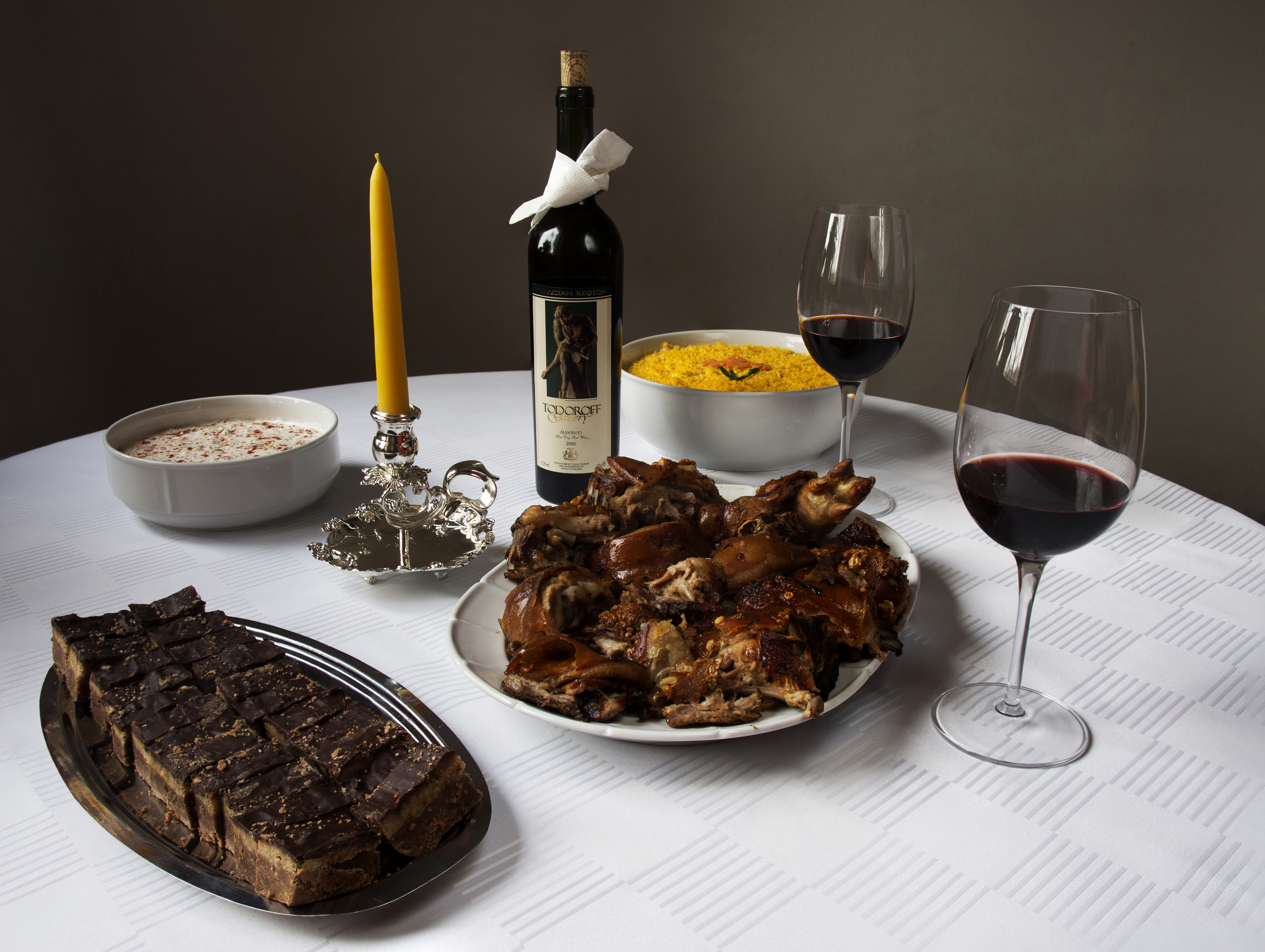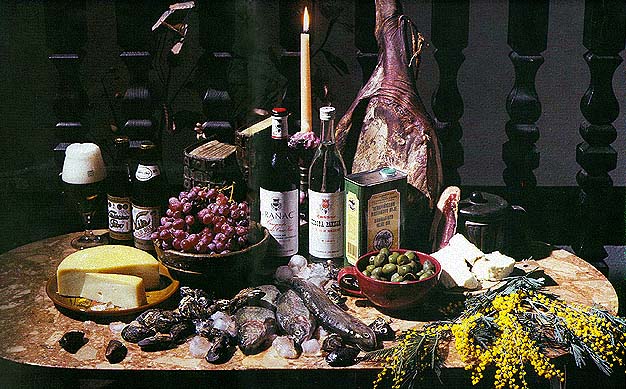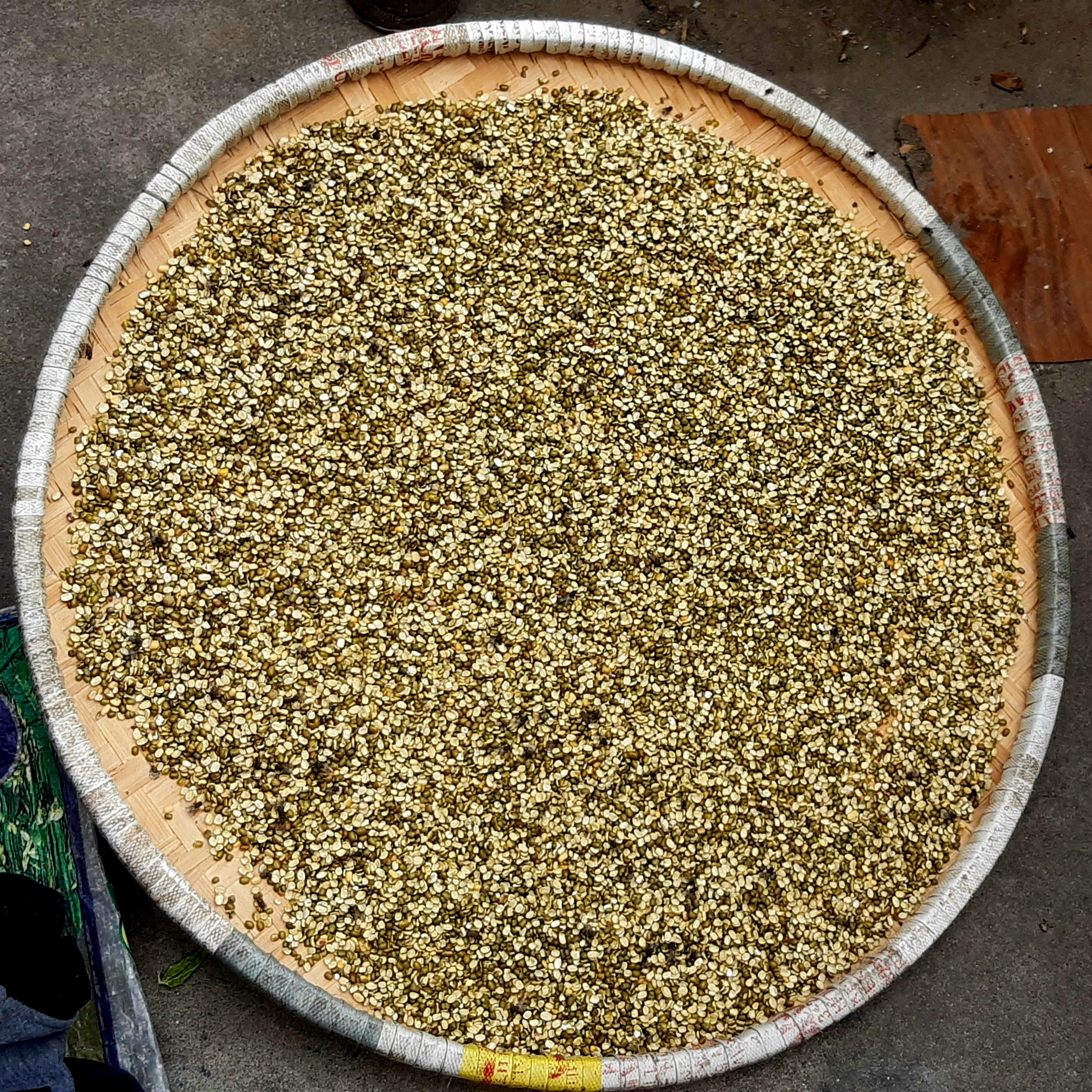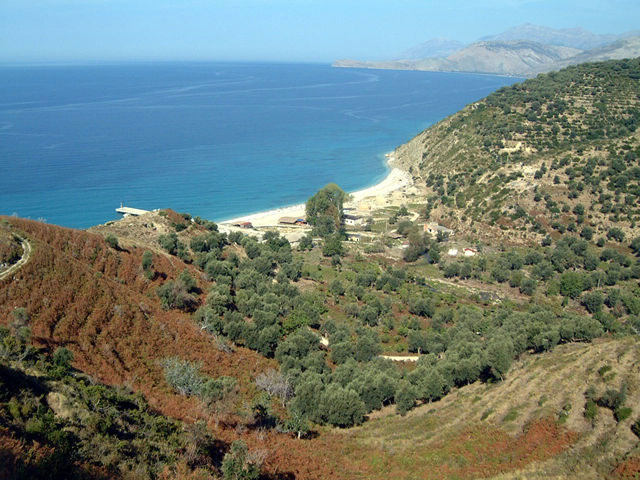|
Pasulj
Pasulj (from ''phaseolus''; ), grah () or grav () is a bean stew made of usually white, cranberry or pinto beans, and more rarely kidney beans that is a popular dish in Balkan cuisine. It is normally prepared with meat, particularly smoked meat such as smoked bacon, sausage, and ham hock, and is a typical winter dish. Other commonly used ingredients include carrots and onions. Another version of the dish using baked beans is known as prebranac (). It is sometimes known in English as Serbian bean soup, and in German-speaking countries as ''Serbische Bohnensuppe'' ("Serbian bean soup"). In North Macedonia, a spicy and thicker variant is known as tavče gravče (; beans on a skillet). The idiom ' ("simple as pasulj") equates to English '' as easy as pie'' and French ''simple comme chou''. See also * List of bean soups * List of legume dishes * List of soups This is a list of notable soups. Soups have been made since Ancient history, ancient times. Some soups are served with ... [...More Info...] [...Related Items...] OR: [Wikipedia] [Google] [Baidu] |
Serbian Cuisine
Serbian cuisine ( sr, српска кухиња / srpska kuhinja) is a Balkan cuisine that consists of the culinary methods and traditions of Serbia. Its roots lie in History of Serbia, Serbian history, including centuries of cultural contact and influence with the Greeks and the Byzantine Empire, the Ottoman Empire, Ottomans, and Serbia's Balkans, Balkan neighbours, especially during the existence of Yugoslavia. Historically, Serbian food develops from pastoral customs that involved the keeping of sheep in mountain highlands, in a climate and regional context that favoured animal husbandry over vegetable farming; Serbian food is therefore traditionally richer in animal products and basic grains - corn, wheat and oats, than fresh vegetable dishes. Following the abandon of widely practiced pastoral lifestyles, Serbian food emerges through the middle ages heavily dependant not on lamb or mutton, but on the keeping of pigs for the annual cull and the production of various cured meats ... [...More Info...] [...Related Items...] OR: [Wikipedia] [Google] [Baidu] |
Montenegrin Cuisine
Montenegrin cuisine is a result of Montenegro's geographic position and its long history and tradition. Review The first major influences to Montenegrin cuisine came from the Levant and Turkey, largely via Serbia: sarma, musaka, pilav, pita, gibanica, burek, ćevapi, kebab, đuveč, and Turkish sweets such as baklava and tulumba. Hungarian cuisine influences stews and sataraš. Central European cuisine is evident in the prevalence of crêpes, doughnuts, jams, many types of biscuits and cakes, and various kinds of breads. Montenegrin cuisine also varies geographically; the cuisine in the coastal area differs from that of the northern highland region. The coastal area is traditionally a representative of Mediterranean cuisine, with seafood being a common dish. The traditional dishes of Montenegro's Adriatic coast, unlike its heartland, have a distinctively Italian influence as well. [...More Info...] [...Related Items...] OR: [Wikipedia] [Google] [Baidu] |
List Of Soups
This is a list of notable soups. Soups have been made since Ancient history, ancient times. Some soups are served with large chunks of meat or vegetables left in the liquid, while others are served as a broth. A broth is a flavored liquid usually derived from boiling a type of meat with bone, a spice mix, or a vegetable mix for a period of time in a Stock (food), stock. A potage is a category of thick soups, stews, or porridges, in some of which meat and vegetables are boiled together with water until they form a thick mush. Bisque (food), Bisques are heavy cream soups traditionally prepared with shellfish, but can be made with any type of seafood or other base ingredients. Cream soups are dairy based soups. Although they may be consumed on their own, or with a meal, the canned, condensed form of cream soup is sometimes used as a quick sauce in a variety of meat and pasta convenience food dishes, such as casseroles. Similar to bisques, chowders are thick soups usually containi ... [...More Info...] [...Related Items...] OR: [Wikipedia] [Google] [Baidu] |
List Of Legume Dishes
This is a list of legume dishes. A legume is a plant in the family Fabaceae (or Leguminosae), or the fruit or seed of such a plant. Legumes are grown agriculturally, primarily for their food grain seed (e.g. beans and lentils, or generally pulse), for livestock forage and silage, and as soil-enhancing green manure. Legume dishes 0–9 * * A * * * * B * * * * * * * * * * * * * * * * * * * C * Callos * Caparrones * Cassoulet * Chana masala * Chapea * Cholent * Chili con carne * Chole bhature * Ciceri e Tria * Cocido lebaniego * Cocido madrileño * Cocido Montañés * Cowboy beans D * * * * * * * * * * E * F * * * * * * * * * * G * * * * * * * H * * J * * K * * * * * * * * L * * * * * M * * * * * * * * * * N * O * P * * * * * * * * * * * * * * * * R * * * * * * * * * * * S * * * * * * * T * * * * U * * V * W * Y * See ... [...More Info...] [...Related Items...] OR: [Wikipedia] [Google] [Baidu] |
List Of Bean Soups
This is a list of notable bean soups, characterized by soups that use beans as a primary ingredient. Bean soups * 15 Bean Soup – a packaged dry bean soup mix produced by the N.K. Hurst Co. in the United States * Amish preaching soup – in American cuisine, it was typically served preceding or following Amish church services. Some versions are prepared with beans and ham hocks. * Bissara – a soup and a bean dip in African cuisine, prepared with dried, puréed broad beans as a primary ingredient. * Black bean soup * Bob chorba – a national Bulgarian dish, the name translates to "bean soup". It is prepared using dried beans, onions, tomatoes, chubritza or dzhodzhen (spearmint) and carrots. * Bouneschlupp – a traditional Luxemburgish green bean soup with potatoes, bacon, and onions *Dal, a term used for lentils, a dish of cooked lentils, and lentil soup on the Indian subcontinent * Fasolada – a Greek, Levantine, and Cypriot soup of dry white beans, olive oil, and veget ... [...More Info...] [...Related Items...] OR: [Wikipedia] [Google] [Baidu] |
Balkans
The Balkans ( ), also known as the Balkan Peninsula, is a geographical area in southeastern Europe with various geographical and historical definitions. The region takes its name from the Balkan Mountains that stretch throughout the whole of Bulgaria. The Balkan Peninsula is bordered by the Adriatic Sea in the northwest, the Ionian Sea in the southwest, the Aegean Sea in the south, the Turkish Straits in the east, and the Black Sea in the northeast. The northern border of the peninsula is variously defined. The highest point of the Balkans is Mount Musala, , in the Rila mountain range, Bulgaria. The concept of the Balkan Peninsula was created by the German geographer August Zeune in 1808, who mistakenly considered the Balkan Mountains the dominant mountain system of Southeast Europe spanning from the Adriatic Sea to the Black Sea. The term ''Balkan Peninsula'' was a synonym for Rumelia in the 19th century, the European provinces of the Ottoman Empire. It had a ge ... [...More Info...] [...Related Items...] OR: [Wikipedia] [Google] [Baidu] |
Frying Pan
A frying pan, frypan, or skillet is a flat-bottomed pan used for frying, searing, and browning foods. It is typically in diameter with relatively low sides that flare outwards, a long handle, and no lid. Larger pans may have a small grab handle opposite the main handle. A pan of similar dimensions, but with less flared, more vertical sides and often with a lid, is called a sauté pan. While a sauté pan can be used as a frying pan, it is designed for lower heat cooking. History Copper frying pans were used in ancient Mesopotamia. Frying pans were also known in ancient Greece where they were called ''tagēnon'' (Greek: τάγηνον) and Rome, where they were called ''patella'' or ''sartago''. The word ''pan'' derives from the Old English ''panna''. Before the introduction of the kitchen stove in the mid-19th century, a commonly used cast-iron cooking pan called a 'spider' had a handle and three legs used to stand up in the coals and ashes of the fire. Cooking pots a ... [...More Info...] [...Related Items...] OR: [Wikipedia] [Google] [Baidu] |
Sausage Dishes
A sausage is a type of meat product usually made from ground meat—often pork, beef, or poultry—along with salt, spices and other flavourings. Other ingredients, such as grains or breadcrumbs may be included as fillers or extenders. When used as an adjective, the word ''sausage'' can refer to the loose sausage meat, which can be formed into patties or stuffed into a skin. When referred to as "a sausage", the product is usually cylindrical and encased in a skin. Typically, a sausage is formed in a casing traditionally made from intestine, but sometimes from synthetic materials. Sausages that are sold raw are cooked in many ways, including pan-frying, broiling and barbecuing. Some sausages are cooked during processing, and the casing may then be removed. Sausage-making is a traditional food preservation technique. Sausages may be preserved by curing, drying (often in association with fermentation or culturing, which can contribute to preservation), smoking, or fre ... [...More Info...] [...Related Items...] OR: [Wikipedia] [Google] [Baidu] |
Legume Dishes
A legume () is a plant in the family Fabaceae (or Leguminosae), or the fruit or seed of such a plant. When used as a dry grain, the seed is also called a pulse. Legumes are grown agriculturally, primarily for human consumption, for livestock forage and silage, and as soil-enhancing green manure. Well-known legumes include beans, soybeans, chickpeas, peanuts, lentils, lupins, mesquite, carob, tamarind, alfalfa, and clover. Legumes produce a botanically unique type of fruit – a simple dry fruit that develops from a simple carpel and usually dehisces (opens along a seam) on two sides. Legumes are notable in that most of them have symbiotic nitrogen-fixing bacteria in structures called root nodules. For that reason, they play a key role in crop rotation. Terminology The term ''pulse'', as used by the United Nations' Food and Agriculture Organization (FAO), is reserved for legume crops harvested solely for the dry seed. This excludes green beans and green peas, which are consid ... [...More Info...] [...Related Items...] OR: [Wikipedia] [Google] [Baidu] |
Croatian Cuisine
Croatian cuisine is heterogeneous and is known as a cuisine of the regions, since every region of Croatia has its own distinct culinary tradition. Its roots date back to ancient times. The differences in the selection of foodstuffs and forms of cooking are most notable between those in mainland and those in coastal regions. Mainland cuisine is more characterized by the earlier Slavic and the more recent contacts with Hungarian and Turkish cuisine, using lard for cooking, and spices such as black pepper, paprika, and garlic. The coastal region bears the influences of Greek and Roman cuisine, as well as of the later Mediterranean cuisine, in particular Italian (especially Venetian). Coastal cuisines use olive oil, herbs and spices such as rosemary, sage, bay leaf, oregano, marjoram, cinnamon, clove, nutmeg, and lemon and orange rind. Peasant cooking traditions are based on imaginative variations of several basic ingredients (cereals, dairy products, meat, fish, vegetables, nut ... [...More Info...] [...Related Items...] OR: [Wikipedia] [Google] [Baidu] |
Albanian Cuisine
Albanian cuisine ( ) is a representative of the cuisine of the Mediterranean. It is also an example of the Mediterranean diet based on the importance of olive oil, fruits, vegetables and fish. The cooking traditions of the Albanian people are diverse in consequence of the environmental factors that are more importantly suitable for the cultivation of nearly every kind of herbs, vegetables and fruits. Olive oil is the most ancient and commonly used vegetable fat in Albanian cooking, produced since antiquity throughout the country particularly along the coasts. Hospitality is a fundamental custom of Albanian society and serving food is integral to the hosting of guests and visitors. It is not infrequent for visitors to be invited to eat and drink with locals. The medieval Albanian code of honour, called ''besa'', resulted to look after guests and strangers as an act of recognition and gratitude. Albanian cuisine can be divided into three major regional cuisines. The cuisine of t ... [...More Info...] [...Related Items...] OR: [Wikipedia] [Google] [Baidu] |
As Easy As Pie
"As easy as pie" is a popular colloquial idiom and simile which is used to describe a task or experience as pleasurable and simple. The phrase is often interchanged with piece of cake, which shares the same connotation. Origin The phrase was used in 1910 by Zane Grey in " The Young Forester" and in the ''Saturday Evening Post ''The Saturday Evening Post'' is an American magazine, currently published six times a year. It was issued weekly under this title from 1897 until 1963, then every two weeks until 1969. From the 1920s to the 1960s, it was one of the most widely c ...'' of 22 February 1913. It may have been a development of the phrase ''like eating pie'', first recorded in ''Sporting Life'' in 1886. In 1855, the phrase, in a slight variation was published in a book called ''Which? Right or Left?'' Here it was used as ''nice as a pie''. Alternatively, in pre-reformation England the collection of liturgical rules for all 35 various days when Easter could fall was called Pie. ... [...More Info...] [...Related Items...] OR: [Wikipedia] [Google] [Baidu] |




.jpg)


